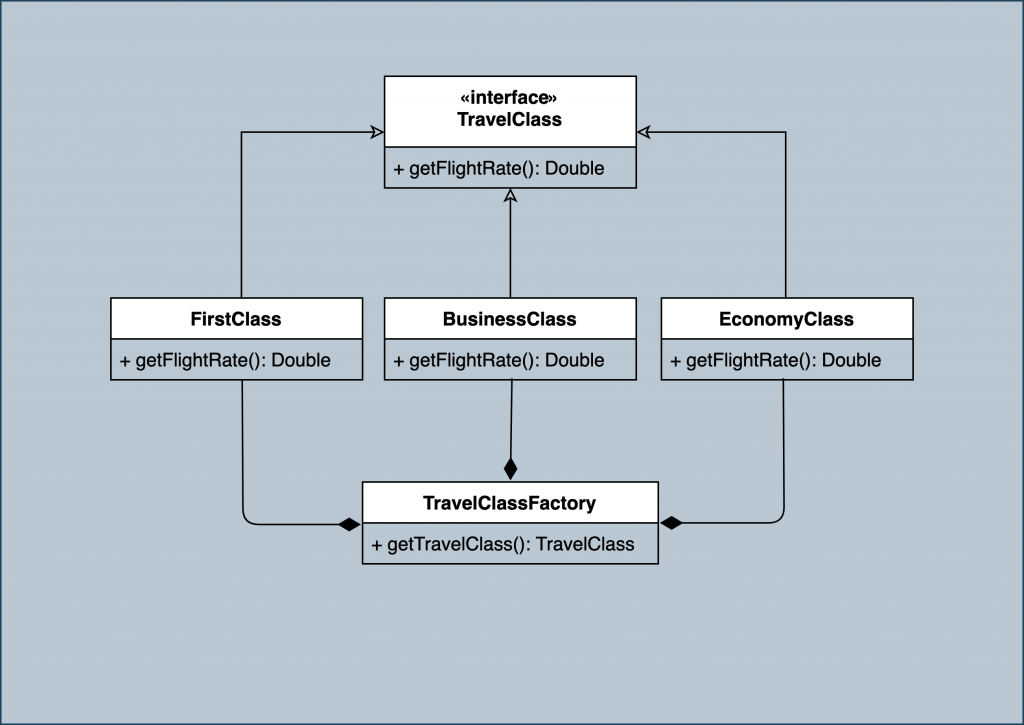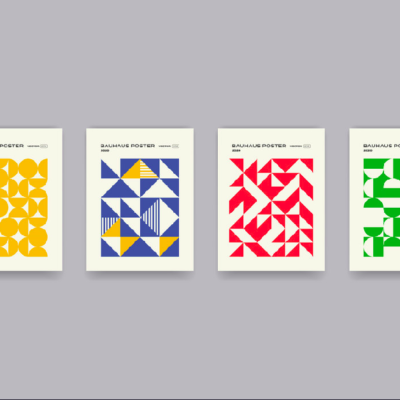The factory pattern belongs in the category of the Creational Design pattern. If you take the word “factory” literally. How does a real factory work? You bring in some raw material and do some processing on it and get an output on the outside. For example:
Raw plastic –> Factory –> Some plastic moulds
As the category suggests itself. In the factory pattern, an interface/class creates an object but lets the subclass infer which object to instantiate. All the subclasses implement a common interface that can have one or more functions. You must be wondering why is there an example of a real factory above?
Well, continue reading.
Class Diagram
Consider the following UML representing the structure of a Class system in airlines.

Implementation
Have a look at the following chunks of code:
Usage
Create an object of TravelClassFactory. Call getTravelClassFrom from the object. Pass in .business/TravelType.BUSINESS as an argument. TravelClassFactory returns a particular TravelClass based on the type.
Pros
It helps in containing all the object creation logic in a single class. It provides you an object based on the data passed in. It also promotes loose-coupling. It depends on the interface or abstract class rather than a concrete class.
Cons
The factory class itself handles making objects. Thus, making it hard to mock that particular object. Factory classes may go bigger and difficult to maintain.
Conclusion
Use a factory pattern when dealing with the creation of many similar objects. If your requirements don’t include the creation of multiple objects. Then using it is not advised. It’s always good to have a concise factory rather than bloating it with all kinds of stuff.
If you have any questions please feel free to leave them in the comment section below.





